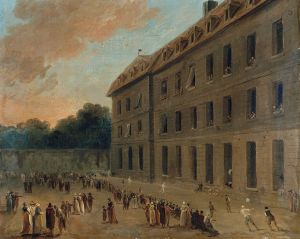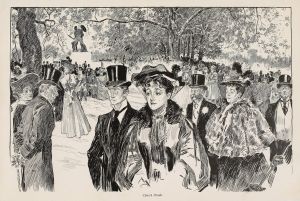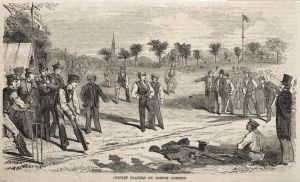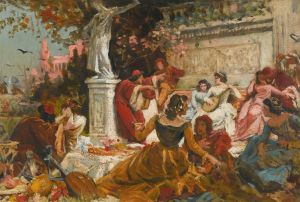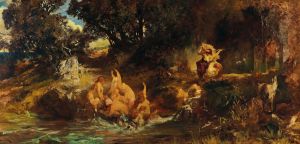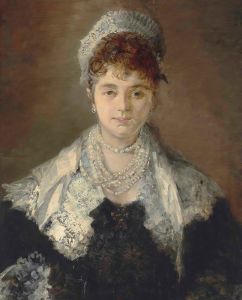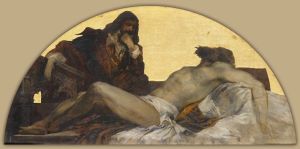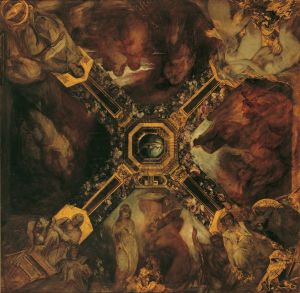
Entwurf zum Festzug 1879 – Die Wagenbauer, Sattler, Riemer und Taschner
A hand-painted replica of Hans Makart’s masterpiece Entwurf zum Festzug 1879 – Die Wagenbauer, Sattler, Riemer und Taschner, meticulously crafted by professional artists to capture the true essence of the original. Each piece is created with museum-quality canvas and rare mineral pigments, carefully painted by experienced artists with delicate brushstrokes and rich, layered colors to perfectly recreate the texture of the original artwork. Unlike machine-printed reproductions, this hand-painted version brings the painting to life, infused with the artist’s emotions and skill in every stroke. Whether for personal collection or home decoration, it instantly elevates the artistic atmosphere of any space.
Hans Makart's "Entwurf zum Festzug 1879 – Die Wagenbauer, Sattler, Riemer und Taschner" is a notable work that reflects the grandeur and opulence associated with the artist's style. Hans Makart, an Austrian painter, was renowned for his historical paintings, portraits, and allegorical works, which often depicted lavish scenes and were characterized by their vibrant color palettes and dramatic compositions.
This particular painting, created as a design for a festive parade in 1879, showcases Makart's ability to blend historical themes with contemporary cultural events. The title translates to "Design for the Parade 1879 – The Carriage Builders, Saddlers, Harness Makers, and Shoemakers," indicating the professions celebrated in the parade. The work was part of a larger series of designs commissioned for a grand procession in Vienna, which was organized to commemorate the silver wedding anniversary of Emperor Franz Joseph I and Empress Elisabeth of Austria.
Makart's involvement in the design of the parade was significant, as he was entrusted with the artistic direction of the event, which was a major cultural highlight in Vienna. His designs were not only intended to be visually stunning but also to convey a sense of national pride and historical continuity. The parade itself was a spectacle, featuring elaborate floats, costumes, and performances that drew inspiration from various periods of Austrian history.
In "Entwurf zum Festzug 1879 – Die Wagenbauer, Sattler, Riemer und Taschner," Makart captures the essence of the craftspeople involved in the creation of carriages and related accessories. The painting likely depicts these artisans in a manner that highlights their skills and contributions to society, celebrating their role in the cultural and economic life of the time. Makart's attention to detail and his ability to render textures and materials with precision would have been evident in this work, as in his other paintings.
The painting is a testament to Makart's influence on the Viennese art scene and his ability to merge art with public life. His work on the 1879 parade solidified his reputation as a leading figure in the cultural landscape of Vienna, and his designs were instrumental in shaping the visual identity of the event. The parade itself was a reflection of the Habsburg monarchy's desire to project an image of unity and prosperity, and Makart's artistic vision played a crucial role in achieving this goal.
While specific details about the painting's current location or its exhibition history may not be readily available, its significance lies in its representation of Makart's broader contributions to art and culture. His work on the 1879 parade remains a notable example of how art can intersect with public celebrations and historical commemorations, leaving a lasting impact on the cultural memory of a nation.





